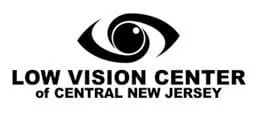What is Low Vision?
People who have low vision are not completely blind, but they do have vision that can not be fully corrected with eyeglasses, contact lenses, medication, or surgery. Low vision can occur in children due to optic nerve disease, cataract, albinism, retinitis pigmentosa or other retinal conditions. Often, low vision develops later in life due to an eye disease such as macular degeneration, diabetic retinopathy, cataract or glaucoma. There is not a "number" or specific level of vision that determines if someone has low vision.
Low vision is a partial loss of sight. It is often a loss of visual acuity or sharpness, but may be a loss of side vision or extreme difficulty with light or glare. Low vision exists when functional vision cannot be adequately corrected with eyeglasses, contact lenses, medications or surgery.
A Low Vision Evaluation is the use of optical, non-optical, and electronic vision aids to maximize remaining vision and allow the patient to maintain his or her independence. This process is very goal-specific; the devices prescribed will be customized to your specific needs.
What is a Low Vision Evaluation?
Low vision services do not cure the cause of low vision but rather utilize the remaining vision to its fullest potential. Low Vision does not replace the need for other concurrent treatments such as surgery or medical care. Low vision rehabilitation is appropriate as soon as there are specific things that can no longer be done because the vision is no longer good enough.
What do I need to bring to my appointment?
Please bring the following to your appointment:
- Completed Low Vision Questionnaire (click here)
- Any glasses, magnifying glasses, or other vision aids that you have.
- A copy of the exam records from the most recent visit to your eye doctor. You can ask your doctor to fax these to the Low Vision Center at (732) 568-0041.
- Insurance cards and referral forms from your primary care doctor (if your primary insurance requires referrals).
What is Low Vision Occupational Therapy?
Low vision occupational therapy is provided by a licensed occupational therapist specializing in the field of low vision.
The main goal of occupational therapy is to assist clients with aging in place and being able to maintain their independence in the home by learning to adapt to their vision loss through the use of a variety of techniques and devices.
Areas that are addressed are:
- Activities of daily living (grooming, dressing, bathing, managing medications, etc
- Home management activities (cooking, cleaning, laundry, food shopping, etc
- Financial management (check writing and recording, bank statements and bills, money management)
- Reading, writing, computer access, and vocational activities.
Clients are instructed and trained in the use of various optical devices and electronic devices as prescribed by their low vision specialist in order to perform reading and writing tasks more effectively and accurately.
Treatment also focuses on teaching clients to maximize their remaining vision with the use of alternate viewing positions to allow them to locate and access more intact areas of vision with greater ease. Clients are educated in the simple household modifications that can help them function better in the home and improve their safety, such as adjusting lighting, creating contrast, reducing clutter, and implementing an organizational/labeling system.
Referral sources are provided for a variety of services that are available in the central NJ area, such as the New Jersey Commission for the Blind, NJ Library for the Blind and Handicapped, local support groups, local transportation services, tax deductions, obtaining free 411 directory assistance, etc.
A typical course of therapy consists of an occupational therapy evaluation and four to six hour-long treatment sessions. Therapy services are provided on a once per week or once every other week basis. Therapy services are provided on-site at our Somerset location. In some cases, a home visit may be scheduled to allow the therapist to make more specific recommendations for home modifications.
Goals of treatment are established with collaboration between the client and occupational therapist in order to allow the client to achieve their desired outcomes.
Low vision rehabilitation is often covered by Medicare and private insurers, provided the client demonstrates need for the services.
Will Insurance Cover My Visit?
The fee for the initial low vision evaluation ranges from $150 to $235, depending on the testing and time required. If you have Medicare, it will usually cover 80% of the examination fee. Depending on your secondary insurance, you may be required to pay a 20% co-payment on the day of the exam. You will also be responsible for a $85 fee for refraction (determination of prescription and magnification needed), which is not covered by Medicare or other insurance providers.
Low vision devices have a wide range of cost, depending on quality and level of technology. Medicare does not cover the cost of low vision devices. The Low Vision Center has a generous return policy, provided the device is returned in a timely manner, in good condition with all packing material intact.

